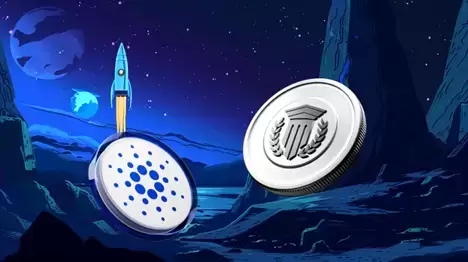 |
|
 |
|
 |
|
 |
|
 |
|
 |
|
 |
|
 |
|
 |
|
 |
|
 |
|
 |
|
 |
|
 |
|
 |
|
これは、トランプ大統領がイーロン・マスクとチームを組んで政府機関を削減した数週間後に起こり、それが何千ものUSAIDの失業とほとんどの外国援助契約の排除につながった。

The Trump administration has finally unveiled its plan to restructure the United States Agency for International Development (USAID), reports Politico. This comes just weeks after President Trump teamed up with Elon Musk to cut government agencies, leading to job losses at USAID and the elimination of foreign aid contracts.
トランプ政権は最終的に、米国国際開発機関(USAID)を再構築する計画を発表しました、とPoliticoは報告しています。これは、トランプ大統領がイーロン・マスクと協力して政府機関を削減し、USAIDでの失業と外国援助契約の排除につながったわずか数週間後です。
The administration plans to shrink and refocus USAID, concentrating on global health, food security, disaster response, and countering China. The proposal argues that current development programs are “inefficient and fragmented,” spread too thin across too many sectors and countries, leading to poor results. Instead, Trump’s plan aims to focus on areas crucial to U.S. interests, like promoting peace, stability, and economic opportunities that benefit American businesses. It also targets global threats, such as pandemics. The proposal suggests that all aid programs should have clear end dates and be closely measured for success. After significantly reducing the 60-year-old agency, Trump aims to rebuild it in his image.
政権は、USAIDを縮小して再焦点を合わせ、世界的な健康、食料安全保障、災害対応、および中国に対抗することを計画しています。この提案は、現在の開発プログラムは「非効率的で断片化されている」と主張しており、あまりにも多くのセクターや国で薄すぎて、結果が悪いと主張しています。代わりに、トランプの計画は、アメリカの企業に利益をもたらす平和、安定、経済的機会を促進するなど、米国の利益にとって重要な分野に焦点を当てることを目指しています。また、パンデミックなどの世界的な脅威も標的にしています。この提案は、すべての援助プログラムが明確な終了日を持ち、成功のために綿密に測定されるべきであることを示唆しています。 60歳の代理店を大幅に減らした後、トランプは彼のイメージでそれを再構築することを目指しています。
The administration plans to rename USAID as US International Humanitarian Assistance (IHA) and bring it directly under the secretary of state, according to a memo circulating among State Department staff and reviewed by WIRED. As part of its reorganization, the agency will “leverage blockchain technology” as part of its procurement process.
国務省のスタッフの間で流通し、Wiredによってレビューされたメモによると、政権はUSAIDを米国国際人道支援(IHA)と改名し、国務長官の下に直接導入する予定です。再編成の一環として、代理店は調達プロセスの一環として「ブロックチェーンテクノロジーを活用」します。
The administration plans to use blockchain technology to improve security, transparency, and traceability in its aid distribution. However, it’s unclear whether this will involve cryptocurrency, stablecoins, or simply using blockchain to track aid.
管理者は、ブロックチェーンテクノロジーを使用して、援助分布のセキュリティ、透明性、およびトレーサビリティを改善する予定です。ただし、これが暗号通貨、スタブコイン、または単にブロックチェーンを使用してAIDを追跡するかどうかは不明です。
The memo comes as USAID staff are uncertain about the agency’s future. USAID was a major target of the Department of Government Efficiency (DOGE), led by Elon Musk. After President Trump’s inauguration, the State Department placed all USAID staff on administrative leave, cut the workforce, and halted some payments to global partners, including those providing lifesaving aid.
メモは、USAIDのスタッフが代理店の将来について不確実であるためです。 USAIDは、Elon Muskが率いる政府効率省(DOGE)の主要な標的でした。トランプ大統領の就任後、国務省はすべてのUSAIDスタッフを管理休暇に配置し、労働力を削減し、救命援助を提供するものを含むグローバルパートナーへの支払いを停止しました。
According to Linda Raftree, a consultant helping humanitarian groups adopt new tech, few blockchain projects have succeeded in the sector because the technology is often unnecessary.
人道的グループが新しい技術を採用するのを支援するコンサルタントであるLinda Raftreeによると、テクノロジーがしばしば不要であるため、このセクターで成功したブロックチェーンプロジェクトはほとんどありませんでした。
“It feels like a solution to a problem that doesn’t exist. Most of the time, there are existing tools that could do the job just as well,” Raftree says.
「存在しない問題の解決策のように感じます。ほとんどの場合、仕事をすることができる既存のツールがあります」とラフリーは言います。
Besides, Giulio Coppi from Access Now says that blockchain offers no clear advantages over other tools like payment systems, and its promotion as a “tech solution” has shown little real impact.
その上、AccessのGiulio Coppiは、ブロックチェーンが支払いシステムなどの他のツールよりも明確な利点を提供しないと述べており、「技術ソリューション」としてのプロモーションはほとんど実際の影響を示していません。
“There’s been a lot of hype around blockchain in the development sector, but in practice, it hasn’t lived up to the claims. The legal and regulatory hurdles are significant, and smaller NGOs may not have the capacity to take on this extra complexity,” Coppi adds.
「開発部門のブロックチェーンの周りに多くの誇大広告がありましたが、実際には、それは主張に耐えていません。法的および規制上のハードルは重要であり、小さいNGOはこの余分な複雑さをとる能力を持たないかもしれません」とCoppiは付け加えます。
However, Blockchain technology has seen some success in the humanitarian sector, such as the UNHCR’s pilot project providing stablecoins to Ukrainians and trials by the Kenya Red Cross. While blockchain can make money transfers faster and easier, it also introduces new burdens for small NGOs.
しかし、ブロックチェーンテクノロジーは、UNHCRのパイロットプロジェクトがウクライナ人に安定したパイロットプロジェクトやケニア赤十字による裁判を提供するなど、人道的セクターである程度の成功を収めています。ブロックチェーンはお金の送金をより速く、より簡単にすることができますが、小さなNGOの新しい負担も導入します。
The proposed adoption of blockchain at USAID aims to tie funding to results, but some employees argue this approach may not be flexible enough in disaster or conflict zones.
USAIDでのブロックチェーンの提案された採用は、資金を結果に結び付けることを目指していますが、一部の従業員は、このアプローチは災害や紛争ゾーンでは十分に柔軟ではないと主張しています。
Critics, like Linda Raftree, feel this push supports claims of corruption within USAID, even though the agency already pays based on completed work, and prefers to fund organizations that demonstrate good performance.
Linda Raftreeのような批評家は、このプッシュがUSAID内の腐敗の主張を支持していると感じています。
免責事項:info@kdj.com
提供される情報は取引に関するアドバイスではありません。 kdj.com は、この記事で提供される情報に基づいて行われた投資に対して一切の責任を負いません。暗号通貨は変動性が高いため、十分な調査を行った上で慎重に投資することを強くお勧めします。
このウェブサイトで使用されているコンテンツが著作権を侵害していると思われる場合は、直ちに当社 (info@kdj.com) までご連絡ください。速やかに削除させていただきます。





























































